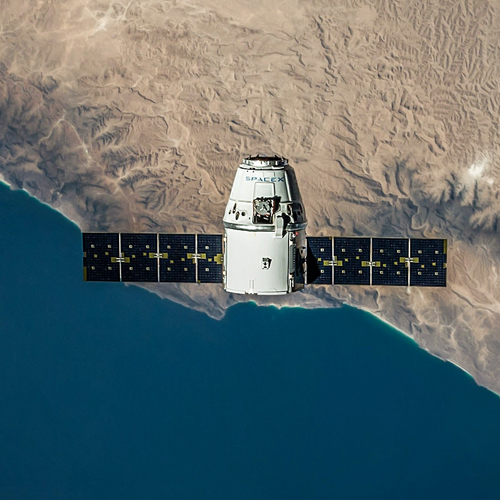The reason why the satellites orbiting earth can stay up in space is due to physics and gravity.
Gravity is trying to pull the satellites down to Earth, whilst the speed that they’re travelling is keeping them from doing so.
This is known as being in ‘orbit’.
Video showing satellites orbiting Earth and how they do it
What is a satellite
A gps satellite is a man made machine which is rapidly travelling around Earth. They carry out functions which include location data, time keeping, surveillance, photography and collecting weather information. There are thousands of satellites & satellite systems which are currently orbiting Earth right now. In fact, China just released it’s own GPS system BeiDou.
The easiest way to explain how they remain up in orbit without crashing back down to earth is using ‘the ball analogy’. If a ball is thrown up into the air, gravity causes it to eventually return back down. The force of gravity is what keeps everything, and everyone planted firmly on the ground, keeping us from floating up into space.
Getting into Orbit
Satellites are launched into spaces orbit by rockets travelling over 40,000km per hour. At these speeds the rocket launching the satellite is able to power through the gravitational forces and break through Earths atmosphere into space.
Once the satellite is positioned correctly into it’s spot above earth, it will detach from the rocket and begin its orbit, using the energy known as momentum to keep itself moving.
How does the satellite remain in Orbit
Satellites are able to remain in orbit without drifting off into outer space by the forces of gravity. When a satellite is travelling thousands of kilometres away, the forces of Earths gravitational pull are still present, albiet not as strong as the closer you are to the planet.
They have the perfect balance between momentum and gravity to remain in orbit, a task in itself which is not easy.
The NOAA-20 satellite is in orbit a few hundred kilometres above Earth. To remain in orbit at that distance, it will need to travel at around 28,000km per hour.
In comparison, the NOAA GOES-East satellite is in orbit 35,000km above Earth, which means that it only has to travel around 10782km per hour to remain in orbit.
Conclusion
Momentum and gravity is what will keep satellites in orbit, and luck for us for us down here on Earth, satellites can remain up there for hundreds of years without us worrying about them crashing down on us.



